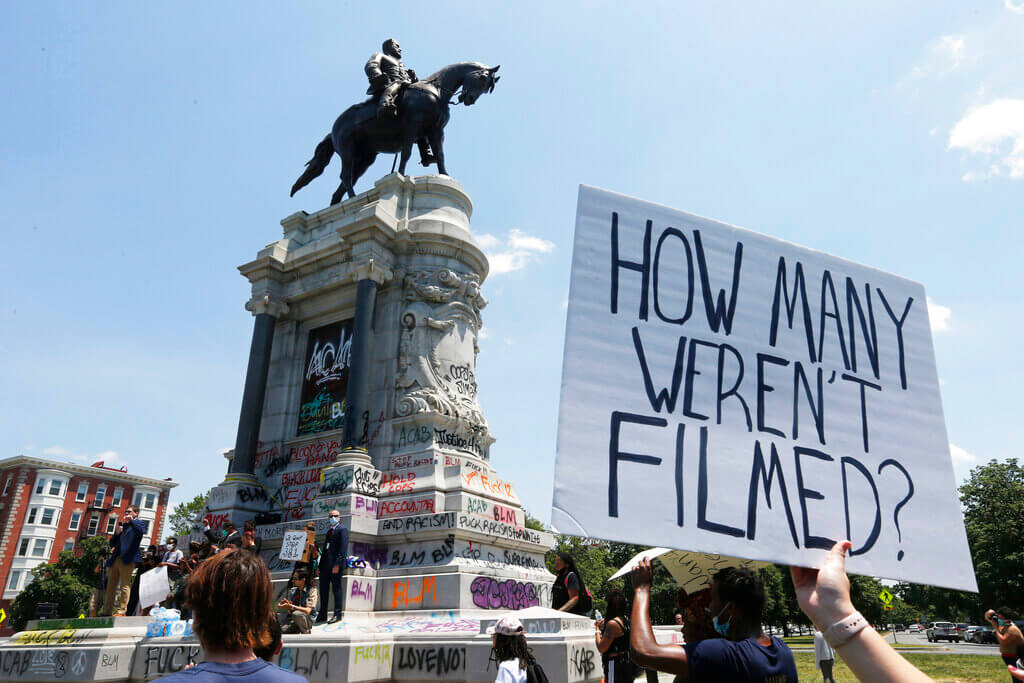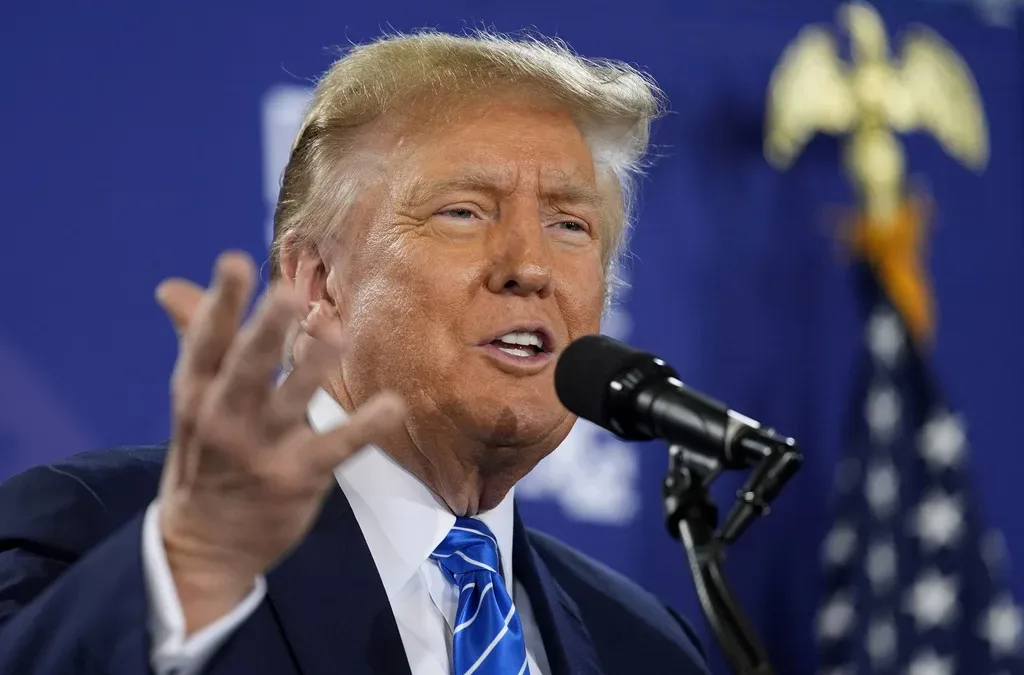
Rev. Robert W. Lee, IV, left, the fourth great nephew of Confederate General Robert E. Lee, speaks to protesters at the foot of the statue of Confederate General Robert E. Lee on Monument Avenue Thursday, June 4, 2020, in Richmond, Va. Lee supports the removal of the statue, which Gov. Ralph Northam said will be removed “as soon as possible” from Monument Avenue. (AP Photo/Steve Helber)
The historic mass uprisings throughout Virginia against police brutality and racial injustice might make you think almost everyone supports the removal of the state’s Confederate monuments. But there are still plenty of white people in our state who are comfortable arguing, publicly on Facebook, that Confederate statues in the commonwealth should stay standing.
Virginia, once the capital of the Confederacy, has more than 200 statues honoring the side that lost the Civil War. Activists and some political leaders have tried for years to remove them. But it was the mass protests over the police killing of 46-year-old George Floyd, a Black man in Minneapolis, that sped action along. For many activists, there is a direct line between police brutality that disproportionately kills Black people in America and the racial injustice these monuments embody.
“It’s been a long time coming. … We’ve tried marches, petitions, protests, going to city council” to get the Confederate monuments removed, said Phil Wilayto, a longtime community organizer and activist with the Virginia Defenders for Freedom, Justice & Equality. “And it took what is in effect a mass uprising of the community to say these things are not acceptable.”
Or as James Boyd, the NAACP chapter president for Portsmouth, another city discussing how their Confederate statues will come down, said: “People are just tired of being sick and tired.” Boyd added that the monuments represent more than 400 years of oppression.
The mere idea of removing the statues, however, has activated people who say they want to “preserve” the monuments, arguing that it is “un-American” to remove them. For example, one poster in the “Monument Avenue Preservation Group” on Facebook put it this way: “Welcome to Soviet Russia, destroy the past and re-write the narrative. I think it’s an American Tragedy.”
Or another: “It belongs to America! Stop the cultural cleansing of our nation’s great heroes and history!”
These arguments are uniquely ironic, considering the Confederate generals themselves chose to secede from America, an act of treason, and fight a bloody war to keep enslaving Black people.
As Prof. Michael Dickinson, an expert in African American history at Virginia Commonwealth University, explained, there were “two primary motivations” for the people who put up Confederate statues on Monument Avenue in Richmond. Neither was about celebrating America.
“The first was to help perpetuate the ‘Lost Cause’ narrative of the Civil War,” Dickinson said in an interview. “This false narrative romanticized the war by glorifying Confederate leaders and Southern motivations. Most notably, this ‘Lost Cause’ vision claimed that preserving states’ rights and preserving Southern culture were the central aims of the Confederacy, when in actuality preserving slavery and white supremacy were its main goals.”
The second motivation, Dickinson said, was “an effort to reassert white supremacy after Reconstruction—physical reminders for the black population who was in control.”
Gov. Ralph Northam announced last week that he would be removing the statue of Confederate Gen. Robert Lee, which sits on Monument Avenue in Richmond. (This was swiftly challenged in court and is under a ten-day injunction.) Richmond Mayor Levar Stoney said he would introduce an ordinance to remove the other Confederate statues from the avenue.
In the meantime, protesters in Richmond and other Virginia cities have pulled down statues themselves, including a statue of Jefferson Davis, the president of the Confederacy.
“More than anything, I think we are dealing with questions of historical memory here,” Dickinson said. “African American communities do not have the luxury of having idealized views of the past or the present. Instead their very survival depends on operating in a clear-eyed reality where systemic racial oppression shapes their lives now and then.”
The Associated Press contributed to this report.
Politics

It’s official: Your boss has to give you time off to recover from childbirth or get an abortion
Originally published by The 19th In what could be a groundbreaking shift in American workplaces, most employees across the country will now have...

Trump says he’s pro-worker. His record says otherwise.
During his time on the campaign trail, Donald Trump has sought to refashion his record and image as being a pro-worker candidate—one that wants to...
Local News

Virginia verses: Celebrating 5 poetic icons for National Poetry Month
There’s no shortage of great writers when it comes to our commonwealth. From the haunting verses of Edgar Allan Poe, who found solace in Richmond's...

Join the fun: Recapping Family Literacy Night’s storybook adventures
When’s the last time you read a book aloud with a loved one? If it’s difficult to answer that question, then maybe it’s time to dust off that TBR...




